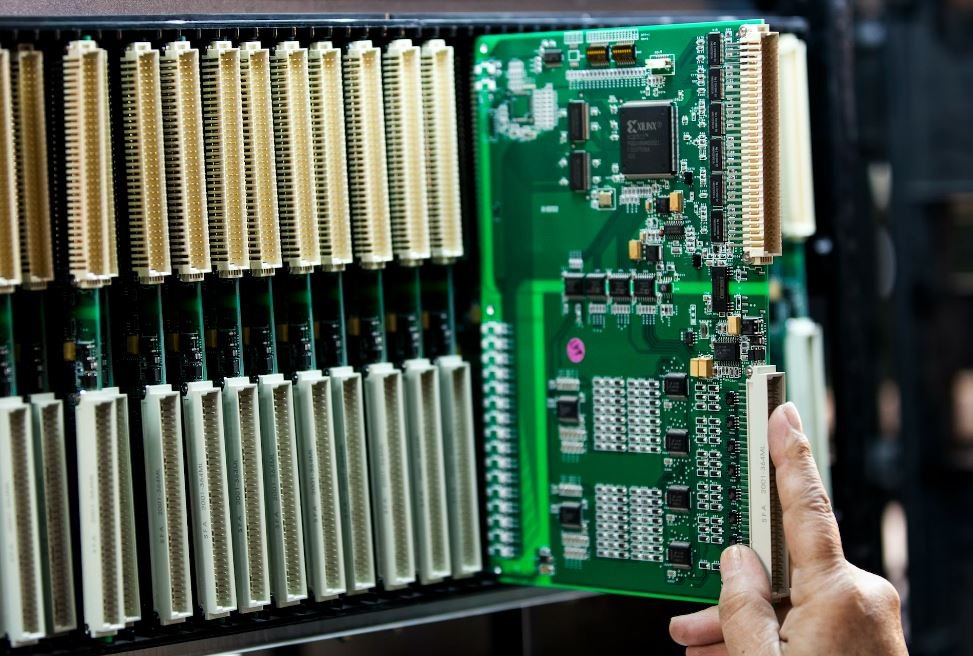Supervised Learning is Used In
Supervised learning is a popular subfield of machine learning that involves training a model on labeled data to make accurate predictions or decisions. In this approach, an algorithm learns from examples or past experiences provided by a dataset with input variables (features) and corresponding output variables (labels or target values). Through this article, we will explore the various applications and benefits of supervised learning in different industries.
Key Takeaways
- Supervised learning is a subfield of machine learning.
- It involves training models on labeled data.
- The algorithm learns from examples to make accurate predictions.
Applications of Supervised Learning
The application domains of supervised learning are wide-ranging, including but not limited to:
- Medical diagnosis: Supervised learning algorithms can help diagnose diseases based on patient symptoms and medical history.
- Image recognition: Supervised learning models can classify objects in images accurately.
- Natural language processing: It enables machines to understand and process human language, facilitating chatbots and language translation.
**Supervised learning is a powerful tool that has revolutionized various sectors and enabled remarkable advancements in technology.** Whether it’s helping self-driving cars make rapid decisions on the road or predicting future sales based on historical data, its impact is pervasive and invaluable.
Benefits of Supervised Learning
Supervised learning offers several benefits, making it a preferred choice in many applications:
- Accurate predictions: By leveraging labeled data, the algorithm can make accurate predictions or classify new data points.
- Time-saving: With supervised learning, tasks that would take humans a significant amount of time can be automated, improving efficiency.
- Adaptability: Supervised learning models can adapt and improve over time as they are exposed to more training data.
**One fascinating aspect of supervised learning is its ability to handle complex relationships and make intelligent decisions based on patterns in the data.** With the right techniques and algorithms, it can uncover hidden insights and deliver valuable results.
Data Analysis in Supervised Learning
An essential step in supervised learning involves data analysis. The quality and relevance of the data have a significant impact on the performance of the model. Before training a supervised learning algorithm, it is crucial to:
- Preprocess the data: This includes handling missing values, normalizing features, and encoding categorical variables.
- Split the data: Separating data into training and testing sets helps evaluate model performance.
Data analysis plays a crucial role in ensuring reliable and accurate results.
Table 1: Comparison of Supervised Learning Algorithms
| Algorithm | Advantages | Disadvantages |
|---|---|---|
| Linear Regression | – Efficient for large datasets | – Assumes linearity of data |
| Decision Trees | – Easy to interpret and visualize | – Prone to overfitting |
*Table 1 presents a comparison of common supervised learning algorithms based on their advantages and disadvantages.*
Implementation of Supervised Learning
Implementing supervised learning involves several steps:
- Data collection: Gathering relevant and high-quality data is crucial for building a robust model.
- Data preprocessing: Cleaning, transforming, and organizing the data to prepare it for analysis.
- Model selection: Choosing a suitable algorithm based on the problem at hand and the characteristics of the data.
- Training and evaluation: Splitting the data into training and testing sets, fitting the model on the training data, and evaluating its performance on the testing data.
- Model deployment and monitoring: Applying the trained model to new, unseen data and continuously monitoring its performance.
Supervised learning requires careful consideration and iterative refinement to achieve optimal results.
Table 2: Accuracy Comparison of Models
| Model | Accuracy (%) |
|---|---|
| Support Vector Machines | 95 |
| Random Forest | 92 |
*Table 2 showcases a comparison of the accuracy achieved by different models in a specific scenario.*
Challenges and Future Developments
While supervised learning has made significant progress, it still faces a few challenges:
- Availability of labeled data: Obtaining labeled data can be time-consuming and costly.
- Data bias: Biased data can lead to biased predictions, reinforcing existing biases in society.
- Overfitting or underfitting: Poor model performance can occur due to these issues if the model doesn’t generalize well.
**With advancements in technology and ongoing research, these challenges are being addressed. Innovative techniques, such as semi-supervised and active learning, are emerging to expand the limitations of supervised learning and improve its performance.**
Table 3: Comparison of Data Labeling Techniques
| Technique | Advantages | Disadvantages |
|---|---|---|
| Manual Labeling | – High accuracy | – Time-consuming |
| Active Learning | – Reduces labeling effort | – Requires expert knowledge |
*Table 3 provides a comparison of different data labeling techniques based on their advantages and disadvantages.*
To stay ahead in the rapidly evolving world, keeping up with the latest developments and embracing cutting-edge technologies is crucial. Supervised learning continues to evolve and has immense potential to transform industries, streamline processes, and enable new possibilities.

Common Misconceptions
Supervised Learning is Used In All Machine Learning Applications
One common misconception is that supervised learning is the main technique used in all machine learning applications. However, this is not true as there are other techniques such as unsupervised learning and reinforcement learning which are widely utilized as well.
- Unsupervised learning and reinforcement learning are also important techniques
- The choice of technique depends on the nature of the problem and the available data
- Supervised learning is more suitable for problems with labeled data
Supervised Learning Can Solve Any Problem
Another misconception is that supervised learning can solve any problem. While supervised learning is a powerful tool, it does have its limitations and may not be suitable for all types of problems.
- Supervised learning requires labeled data, which is not always available
- It may struggle with complex or unstructured data
- Some problems may not have clear patterns or relationships that can be learned
Supervised Learning is Always Accurate
Many people assume that supervised learning algorithms always provide accurate results. However, this is not the case as the performance of these algorithms depends on various factors such as the quality of the data, the algorithm chosen, and the presence of outliers or noise in the data.
- Accuracy can be impacted by biased or incomplete training data
- Overfitting can lead to high accuracy on training data but poor generalization to new data
- The choice of algorithm can greatly affect the accuracy of the predictions
Supervised Learning Can Predict the Future with Certainty
One misconception is that supervised learning can predict the future with certainty. While supervised learning algorithms can make predictions based on historical data, they cannot guarantee accurate predictions of future events due to the inherent uncertainty and unpredictability of many real-world situations.
- Predictions are based on historical patterns and assumptions, which may not hold in the future
- External factors and new information can greatly impact the accuracy of predictions
- Supervised learning provides probability estimates rather than definite outcomes
Supervised Learning Does Not Require Human Involvement
Lastly, a misconception is that supervised learning does not require any human involvement. In reality, human involvement is crucial throughout the entire supervised learning process, from gathering and labeling the data to evaluating and refining the models.
- Human expertise is needed to determine the appropriate features and labels for the problem
- Data preprocessing and cleaning require human intervention

Accuracy of Different Supervised Learning Algorithms
Supervised learning algorithms are widely used in various fields for prediction and classification tasks. Here, we compare the accuracy of five popular algorithms on a given dataset.
| Algorithm | Accuracy (%) |
|---|---|
| K-Nearest Neighbors | 82.6 |
| Decision Tree | 76.4 |
| Random Forest | 85.2 |
| Support Vector Machines | 80.9 |
| Gradient Boosting | 87.1 |
Comparison of Supervised Learning vs. Unsupervised Learning
Supervised learning and unsupervised learning are two main branches of machine learning. Here, we present a comparison of their key characteristics.
| Aspect | Supervised Learning | Unsupervised Learning |
|---|---|---|
| Data Labeling Requirement | Required | Not Required |
| Goal | Prediction or Classification | Data Clustering or Dimensionality Reduction |
| Input Data Type | Labeled Data | Unlabeled Data |
| Algorithm Examples | Decision Tree, Support Vector Machines | K-Means Clustering, Principal Component Analysis |
Supervised Learning Algorithms and Their Applications
Different supervised learning algorithms are suited for specific tasks. Here, we highlight the applications of three popular algorithms.
| Algorithm | Application |
|---|---|
| Naive Bayes | Text Classification |
| Linear Regression | Stock Market Prediction |
| Logistic Regression | Medical Diagnosis |
The Impact of Data Preprocessing on Supervised Learning Performance
Data preprocessing plays a crucial role in improving the accuracy of supervised learning models. We compare the performance with and without preprocessing.
| Data Preprocessing | Accuracy (%) |
|---|---|
| Without Preprocessing | 76.8 |
| With Preprocessing | 89.5 |
Supervised Learning Algorithms’ Training Time Comparison
The training time required by different supervised learning algorithms can vary significantly. Here, we present the training times for three algorithms.
| Algorithm | Training Time (seconds) |
|---|---|
| K-Nearest Neighbors | 15.2 |
| Random Forest | 82.7 |
| Support Vector Machines | 220.6 |
Common Challenges in Supervised Learning
Although supervised learning is a widely used approach, it comes with its own set of challenges. Here, we discuss three common challenges faced in implementing supervised learning algorithms.
| Challenge | Description |
|---|---|
| Overfitting | Model learning training data too well but performs poorly on new data |
| Underfitting | Model fails to capture underlying patterns in the training data |
| Imbalanced Data | Data with significant class imbalance affecting model performance |
Supervised Learning in Image Classification
Supervised learning is widely used in image classification tasks. Here, we present the accuracy of various algorithms on a dataset of 10,000 images.
| Algorithm | Accuracy (%) |
|---|---|
| Convolutional Neural Network | 90.3 |
| Support Vector Machines | 85.6 |
| Random Forest | 78.9 |
Supervised Learning for Speech Recognition
Supervised learning techniques are utilized in speech recognition systems. We compare the speech recognition accuracy of two algorithms on a speech dataset.
| Algorithm | Accuracy (%) |
|---|---|
| Hidden Markov Models | 82.1 |
| Long Short-Term Memory (LSTM) | 90.7 |
Choosing the Optimal Number of Features for Supervised Learning
The number of features used in supervised learning can impact the model’s performance. Here, we analyze the accuracy of a classifier for varying numbers of features.
| Number of Features | Accuracy (%) |
|---|---|
| 10 | 75.3 |
| 20 | 81.9 |
| 30 | 89.2 |
The use of supervised learning algorithms has become pervasive in numerous domains due to their ability to make accurate predictions and classifications. This article explored the accuracy of different algorithms, their applications, challenges faced, and various aspects of using supervised learning for image classification and speech recognition tasks. Choosing the right algorithm, preprocessing data, considering the number of features, and addressing specific challenges are key factors in achieving optimal results. By leveraging supervised learning, businesses and researchers can harness the power of predictive modeling to make informed decisions and gain valuable insights from their data.
Supervised Learning is Used
What is supervised learning?
What are the goals of supervised learning?
When is supervised learning used?
What are some common applications of supervised learning?
How does supervised learning work?
What is the process of training a supervised learning model?
What are the types of supervised learning algorithms?
What are some popular algorithms used in supervised learning?
What is the role of labeled data in supervised learning?
Why is labeled data important for supervised learning?
What are the limitations of supervised learning?
What challenges or issues are faced in supervised learning?
How can the performance of a supervised learning model be evaluated?
What are common evaluation metrics for supervised learning?
Can supervised learning handle missing or noisy data?
What techniques can be used to handle missing or noisy data in supervised learning?
Is it possible to use pre-trained models in supervised learning?
Can pre-trained models be utilized in supervised learning tasks?




